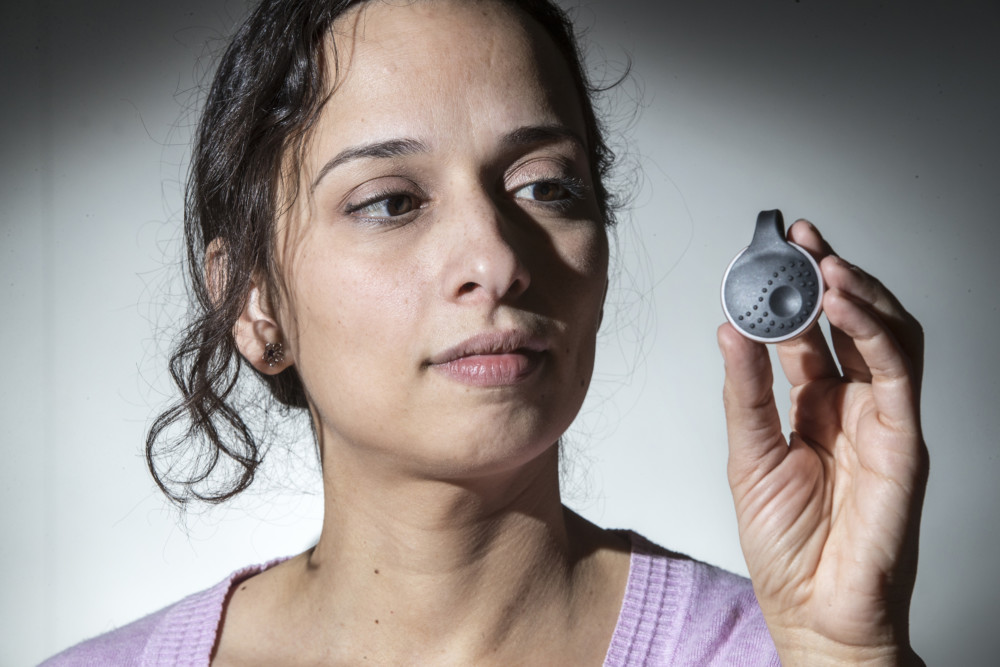By Anna Orso
The Philadelphia Inquirer
WWR Article Summary (tl;dr) Can technology play a role in preventing violence? Yasmine Mustafa, CEO of “Roar for Good” believes yes. She is the CEO of the company that developed Athena, a small, wearable device. In the event of an attack, a woman can activate the device and send out a loud sound and/or notify friends and family of her location.
PHILADELPHIA
For generations, women have carried devices with the goal of preventing sexual assault, whether it was stashing pepper spray in a purse or attaching a rape whistle to a key chain.
Now in 2018, we have apps and gadgets, new versions of protective defenses that include a bracelet that uses a stench to repel attackers, roofie-detecting nail polish, and “consent apps.”
The internet-fueled #MeToo movement facilitated the most recent reckoning over sexual assault and harassment, but can technology also play a role in preventing violence? Or are these simply 21st-century iterations of old attitudes that assume the onus is on women?
Yasmine Mustafa says that in her ideal future, these devices won’t need to exist. But, she said, “why not create things that make things better in the meantime, until we achieve gender equality?”
Mustafa is CEO of Roar for Good, the 15-person company that developed Athena, a small, wearable device developed in Philadelphia that she calls “the more innovative alternative to pepper spray.” In the event of an attack, a woman can activate the device and send out a loud sound and/or notify friends and family of her location.
She said the device, which retails for $129, though a lower-cost option is in development, was marketed toward and popular among young urban women, as well as parents who bought them for college-age daughters. “Tens of thousands” of units have been sold, said Mustafa, 36.
But Athena has faced plenty of backlash. It was recently featured in a Washington Post story that was a critical roundup of protective gadgets. In 2015, the British newspaper the Independent published a piece about Athena titled, “Another ‘anti-rape device’ has been funded, conveniently ignoring all the actual facts about rape.”
Some activists say these types of devices are nothing more than a Band-Aid on a cultural problem and play into common misconceptions about who commits sexual violence. (In most cases, it’s a person known to the victim.)
Hannah Brancato, the cofounder of a Baltimore-based activist collaboration that works to fight rape culture, said the focus should be more on education “about how not to rape.”
“Culturally,” she said, devices like Athena are “still reinforcing a standard that the responsibility is on people not to get raped.”
When fielding these types of critiques, Mustafa points to her company’s Roar Back program, which amounts to a series of partnerships with nonprofits that aim to educate men in empathy and prevent violence against women, as well as app features that educate users in situational awareness and other safety measures. She said she hopes the educational component can mitigate the perception that the responsibility is on women to avoid sexual assault.
“We’re trying. We’re doing something. And we’re not just doing it to make money,” she said. “We’re doing it to really make a difference.”
Jessa Lingel, an assistant professor at the Annenberg School for Communication at the University of Pennsylvania, studies digital culture and is researching how feminism has changed the internet. She said she worries that wearable tech devices play into “a discourse of making women feel afraid in public space.”
“Even when technologies come along that have an important impact in fighting sexual violence against women, they don’t always solve the problem,” she said. “Sometimes they just create new ones.”
Take “consent apps,” or smartphone applications that allow users to request consent for sex acts.
LegalFling, a consent app developed in Europe that launched in beta at the end of February, creates a legally binding “live” contract that users can personalize, meaning they can select whether they consent to specific acts like explicit video production or “erotic practices.”
The boundaries can be set and changed at any time during the encounter by either partner. LegalFling’s creators didn’t respond to an interview request.
Though these apps might more often put the responsibility on men to seek affirmative consent, Brancato said a verbal conversation must occur to establish “enthusiastic” consent before a sexual interaction, and an app likely can’t capture the nuances of that conversation. Also, she added, “consent can be retracted at any time.”
In a recent New York Times article about consent apps, Michelle Drouin, an expert on technology and relationships, pointed out that consenting to sex or certain acts might pressure a person to fulfill them simply because they agreed to them in advance. She also said it’s “unrealistic” to expect people to use an app during a sexual encounter.
“It would be very awkward within the context of an intimate encounter to be, like, ‘Wait a second, I’m changing my mind on the app and also with you,'” she said.
Lingel said that for now, she’s most optimistic about technologies that allow women to connect with each other, provide social support, and document sexual violence.
“When a technology comes out that isn’t just feminist in its ambitions and design, but also its process of development,” she said, “then I think we’ll see the most promising tools for preventing sexual violence.”














































































































































































































































































































































































